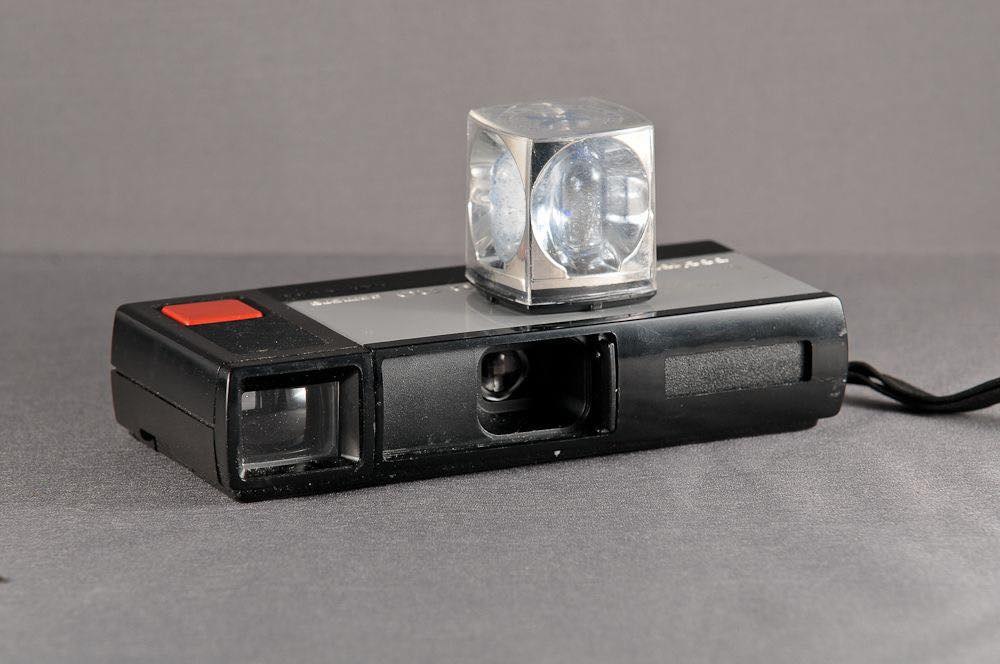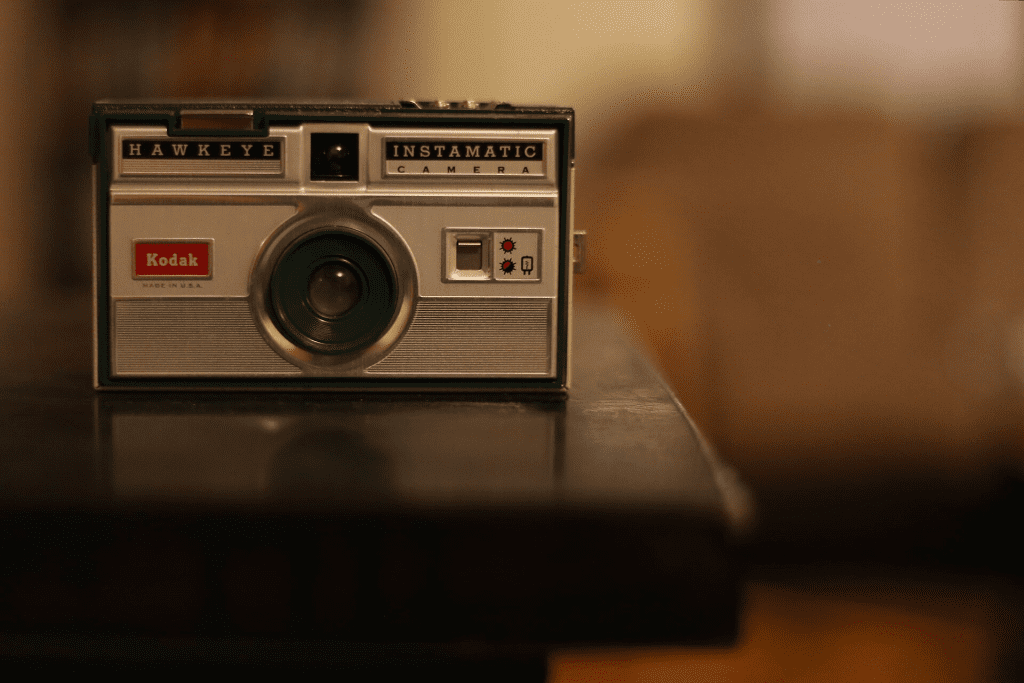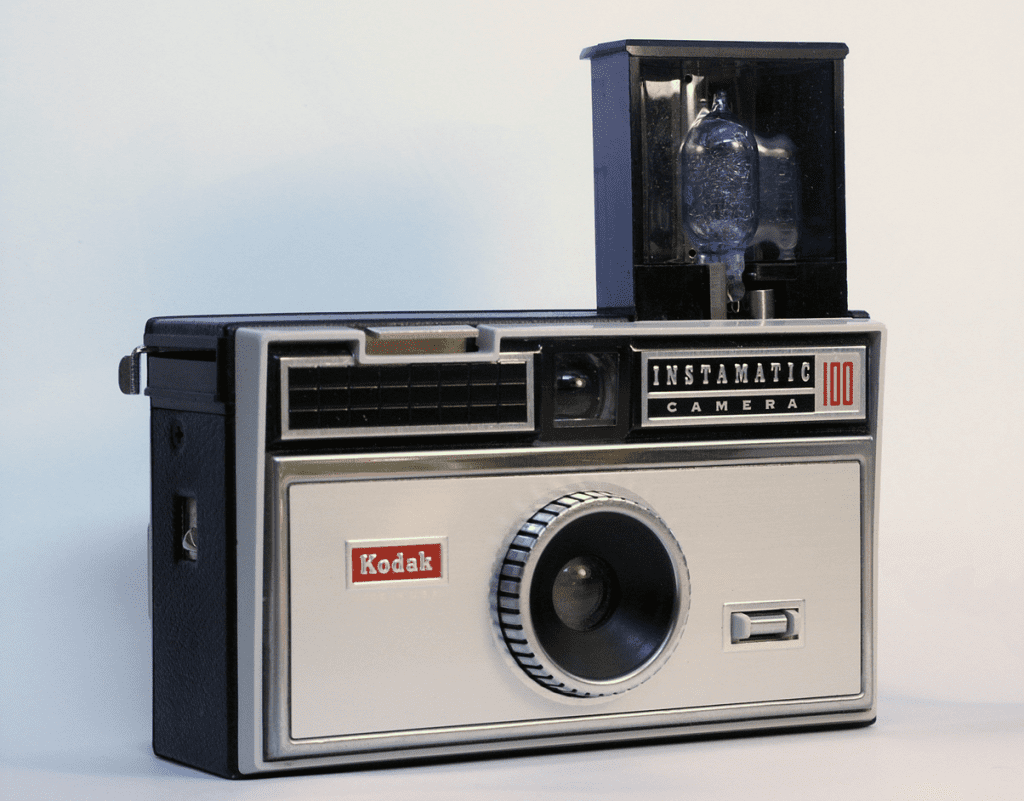The Instamatic camera series, introduced by Kodak in 1963, marked a significant shift in the world of photography. Designed to make taking pictures easy and affordable, the Instamatic became one of the most popular cameras of its time, introducing millions to photography and sparking an industry-wide movement toward low-cost, easy-to-use cameras. Let’s take a closer look at the history, impact, and ongoing influence of the Instamatic camera series.
Instamatic’s Origins: Simplicity at Its Core

The story of the Instamatic begins in the early 1960s when Kodak aimed to create a user-friendly camera that eliminated the frustrations of loading film.
The Birth of the Instamatic Series
Kodak released the first Instamatic model, the Instamatic 50, in the UK in February 1963, followed by the Instamatic 100 in the US shortly afterward. The key innovation behind the Instamatic was its use of Kodak’s new 126 film cartridge, which allowed users to load film quickly and easily, without the risks of accidental exposure or misalignment.
Design Simplicity: A Snapshot for Everyone
The Instamatic’s design was straightforward, featuring a fixed-focus lens and a simple shutter mechanism. With a built-in flash that used single-use bulbs, it followed in the footsteps of Kodak’s earlier Brownie cameras, which were also known for their accessibility and ease of use. The affordability and practicality of the Instamatic made it a staple in households across the globe, introducing everyday people to the joy of photography.
The Technological Evolution of the Instamatic Camera
The Instamatic series didn’t just stop with the basic models; it evolved alongside the advancements in camera technology throughout the 1960s and 1970s.
Advancements in Instamatic Models
The initial Instamatic models were soon followed by more advanced versions like the Instamatic 300, 400, and 700. These models introduced features such as built-in light meters, spring-driven film advance, and adjustable shutter speeds. The most sophisticated Instamatic was the Instamatic Reflex, a single-lens reflex (SLR) camera made in Germany, which could accommodate a variety of interchangeable lenses.
Magicube Flash Technology
In the 1970s, Kodak introduced a new line of Instamatic models featuring Magicube flash technology, which enabled photographers to take up to four flash shots without needing batteries. This innovation made it even easier to capture moments, as the cameras became more versatile in various lighting conditions. Models with Magicube compatibility were labeled with an “X” in their model numbers, like the Instamatic X-15.
The Introduction of the Pocket Instamatic: A New Format for Portability

In 1972, Kodak introduced the Pocket Instamatic series, catering to the demand for even more compact cameras. This series utilized the new 110 film format, which maintained the easy-loading design but came in a smaller size.
Features of the Pocket Instamatic Cameras
The Pocket Instamatic models ranged from the basic Pocket Instamatic 10 to the high-end Pocket Instamatic 60. The most sophisticated models featured stainless steel bodies, automatic exposure control, and improved lens quality. The smaller size of the Pocket Instamatic cameras made them highly portable, enabling photographers to carry them anywhere, thus further popularizing casual photography.
Mass Production and Popularity
The Pocket Instamatic cameras became an instant hit, with over 25 million units sold within three years of their launch. The format remained popular well into the 1990s, despite the limitations of the smaller 110 film’s image quality.
The Impact of the Instamatic on the Photography Industry
The Instamatic series was not only commercially successful but also transformative in its influence on the photography industry.
Instamatic’s Role in Democratizing Photography
Before the Instamatic, photography was often seen as complex, requiring technical knowledge to load film, adjust settings, and develop pictures. The Instamatic made it possible for anyone to take photographs, helping to democratize the art form. The camera’s low cost and ease of use opened the door for new generations of amateur photographers.
Sparking Competition Among Manufacturers
The success of the Instamatic series prompted other camera manufacturers, such as Canon, Minolta, and Olympus, to develop their own low-cost, easy-to-use cameras. Some of these competitors even produced more advanced versions of the Instamatic, featuring interchangeable lenses, built-in light meters, and rangefinders.
The Decline of the Instamatic Series: Changing Technologies

Despite its massive success, the Instamatic series eventually faced challenges as new photographic technologies emerged.
The Rise of Electronic Cameras and 35mm Film
As the 1980s approached, electronic cameras with built-in metering, automatic focus, and 35mm film became more popular. These advancements offered better image quality, greater flexibility, and more features than the Instamatic cameras. As a result, demand for the Instamatic series declined, leading Kodak to phase out production by the late 1980s.
The Digital Revolution
The rise of digital cameras in the 1990s further accelerated the decline of the Instamatic. Digital cameras offered instant image review, easier storage, and no need for film development, making them more appealing to consumers. The era of film-based cameras, including the Instamatic, came to a quiet end as digital photography took over.
Contemporary Influence of the Instamatic
Despite its decline, the Instamatic’s influence remains evident in modern photography culture and design.
Hipstamatic and Instagram: The Digital Homage
The legacy of the Instamatic lives on in digital applications like Hipstamatic and Instagram. These apps mimic the aesthetic of vintage cameras, offering filters and effects that replicate the look of Instamatic snapshots. Instagram’s iconic square image format and its logo were inspired by the Instamatic’s design, showcasing the lasting appeal of Kodak’s creation.
Nostalgia for Analog Photography
In recent years, there has been a resurgence of interest in film photography, fueled by a sense of nostalgia for the simpler, analog era of the Instamatic. Collectors and photography enthusiasts continue to seek out vintage Instamatic cameras, appreciating their straightforward design and historical significance.
Conclusion: The Lasting Legacy of the Kodak Instamatic
The Kodak Instamatic series revolutionized photography by making it accessible to the masses. Its easy-to-use design, affordable pricing, and innovative features introduced millions to the joy of capturing memories. While modern digital technology has replaced the Instamatic, its influence can still be seen today in the world of photography apps, social media aesthetics, and the ongoing nostalgia for analog simplicity. The Instamatic may no longer be in production, but its impact on photography will never be forgotten.


